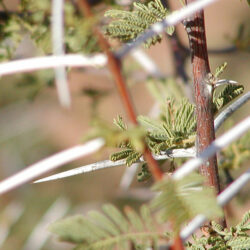Wild Cheetahs Once Thought Gone from Somaliland, Confirmed in Western Region
-

- by Brandy Morenko Campbell February 3, 2023

Article Summary of Cheetahs persist in the wild in the remote Awdal region of Somaliland.
Authors: Laurie Marker, Erin Connolly, Abdinasir Hussein Saed, Emma Reasoner, Khadar Yasin Aden and Bogdan Cristescu
Cheetahs historically had a wide distributional range that covered much of the Horn of Africa, including Somaliland. In recent years, due to the illegal wildlife trade of cheetah cubs and human-wildlife conflict, their presence has been unknown in the region and there were concerns that they might be locally extinct. The Cheetah Conservation Fund (CCF) and Somaliland’s Ministry of Environment and Climate Change (MoECC) collaborated to carry out rapid surveys in the western Adwal region during 2021 and 2022 to determine if cheetahs might still persist. The team drove to a total of 26 different villages in the two years, to speak to village elders and pastoralists about cheetahs near their communities. To their surprise, many villages reported seeing cheetahs, and there were also several reports of cheetahs preying on small livestock, such as sheep and goats.


On two occasions, surveyors were told of very recent sightings that they were able to further investigate. Local community members led them to the location of sightings, where CCF confirmed cheetah tracks in one instance and suspected cheetah scrapes in the other. Researchers were also informed and obtained photographs of a cheetah that was confirmed to have been shot in defense of livestock. They also received information and photos of two cheetahs found dead and suspected poisoned by bait. This occurred in the same region where community members reported livestock predation.
The presence of cheetahs over two consecutive years in the western Adwal region confirmed via carcasses, reports of predation, and cheetah signs in the field are exciting and provide valuable updates to the global understanding of the species’ distribution. Unfortunately, it also suggests that this region’s cheetah population is struggling with human-wildlife conflict that is negatively impacting the cheetah population. This baseline research has highlighted the urgent need to better understand these regional challenges so they can be addressed appropriately.
CCF and MoECC are dedicated to continuing the engagement with local communities to better understand the scope of the issue so that they can work together to develop conflict mitigation strategies that benefit both the rural communities and the cheetahs.





